8 Most Effective Customer Service Channels [2024]
Customer service is a vital aspect of any business, as it helps build trust, loyalty, and customer satisfaction. However, customer service is more than just a one-size-fits-all solution, as customers have different preferences, needs, and expectations when communicating with a business. Therefore, it is important for companies to offer a variety of customer service channels and optimize them according to the latest trends and best practices.
In this article, we will explore the eight most effective customer service channels in 2024, and some tips and best practices for choosing and optimizing your business's proper customer service channels.
What Is Customer Service Channels
Customer service channels are how a business communicates with its customers and provides assistance, information, or solutions to their problems or inquiries. Customer service channels can be divided into two categories: traditional and digital.
Traditional customer service channels, such as telephone, mail, or face-to-face interactions, have been used for a long time. These channels are usually more personal but costly, time-consuming, and limited in availability and scalability.

Digital customer service channels are the ones that use the internet, mobile devices, or software applications to disseminate information to customers, such as email, social media, online forums, live chat, video chat, knowledge base, or web forms. These channels are usually more convenient, fast, and scalable but also more impersonal, complex, and prone to technical issues.
Both traditional and digital customer service channels have their advantages and disadvantages, and the choice of the best channel depends on various factors, such as the type of business, the type of customer, the type of issue, the urgency of the issue, the cost of the channel, and the customer's preference.
3 Types of Customer Service Channels
There are three types of customer service channels that businesses can offer to their customers: single-channel, multi-channel, and omni-channel.
Single-Channel Customer Service
Single-channel customer service is when a business offers only one customer service channel to its customers, such as telephone, email, or live chat. This type of customer service is simple and easy to manage but also very limited and restrictive, as it does not cater to customers' diverse needs and preferences and may result in low customer satisfaction and retention.
Multi-Channel Customer Service
Multi-channel customer service is when a business offers more than one customer service channel to its customers, such as telephone, email, social media, online forum, live chat, video chat, knowledge base, or web forms. This type of customer service is more flexible and diverse, allowing customers to choose the channel that suits them best and may result in higher customer satisfaction and retention.
Omni-Channel Customer Service
Omni-channel customer service is when a business offers a seamless and integrated customer service experience across multiple channels, such that customers can switch between different channels without losing context, information, or progress, and agents can access the complete history and profile of each customer across all channels. This type of customer service is the most advanced and customer-centric, as it provides a smooth, personalized, and holistic customer service journey and may result in the highest customer satisfaction and retention.
8 Most Effective Customer Service Channels
Here are the eight most effective customer service channels for 2024, their pros and cons, and some tips on effectively utilizing them.
Telephone
Telephone is one of the oldest and most widely used customer service channels, as it allows customers to communicate directly with a human agent and get immediate and personalized assistance. The telephone is especially practical for complex, urgent, or sensitive issues or customers who prefer a more human touch.

Pros
- Provides a personal and human connection
- Allows for real-time and interactive communication
- Enables voice cues and tone to convey emotions and empathy
- Can handle complex and nuanced issues
Cons
- It can be costly and time-consuming
- Can have long wait times and dropped calls
- Can have language and accent barriers
- It can have background noise and poor sound quality
Tips for using it better for customer support:
- Use a toll-free or local number to reduce the cost for customers
- Provide an IVR (Interactive Voice Response) system to route customers to the right agent or department
- Use call recording and monitoring to assure quality and compliance
- Use call analytics and feedback to measure and improve performance
- Use call-back or scheduling options to reduce wait times and improve customer satisfaction
- Use call transcription and translation to overcome language and accent barriers
- Use call automation and AI to handle simple and repetitive tasks
Email is another common and popular customer service channel, as it allows customers to send and receive written messages with attachments and get detailed and documented assistance. Email is especially effective for non-urgent, simple, or formal issues or customers who prefer a more asynchronous and convenient communication.
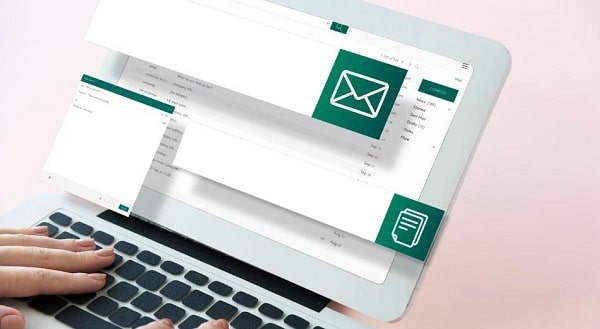
Pros
- Provides a written and documented record
- Allows for detailed and structured communication
- Enables attachments and links to provide additional information
- Can be accessed and replied to at any time and from any device
Cons
- It can be slow and delayed
- Can have spam and security issues
- Can have miscommunication and misunderstanding
- It can have clutter and overload
Tips for using it better for customer support:
- Choose a professional and personalized email address and signature
- Choose clear and concise subject lines and greetings
- Use proper grammar, spelling, and punctuation
- Use bullet points, headings, and paragraphs to organize the content
- Use attachments and links sparingly and appropriately
- Use email templates and canned responses to save time and ensure consistency
- Use email automation and AI to handle simple and repetitive tasks
- Use email analytics and feedback to measure and improve performance
Social Media
Social media is a relatively new and emerging customer service channel, as it allows customers to interact with a business through various social media platforms, such as Facebook, Twitter, Instagram, or LinkedIn, and get instant and public assistance. Social media is especially effective for proactive, informal, or viral issues or customers who prefer more social and engaging communication.

Pros
- Provides a social and engaging connection
- Allows for instant and public communication
- Enables multimedia and emoticons to convey emotions and personality
- Can reach and attract a large and diverse audience
Cons
- It can be challenging and risky
- Can have damaging feedback
- Can have privacy and security issues
- Can have platform and format limitations
Tips for using it better for customer support:
- Chose a consistent and recognizable social media handle and profile
- Chose the appropriate tone and style for each platform and audience
- Use multimedia and emoticons sparingly and appropriately
- Use hashtags and mentions to increase visibility and relevance
- Use direct messages and comments to respond to customers
- Use social media monitoring and listening software to track and manage conversations
- Use social media automation and AI to handle simple and repetitive tasks
- Use social media analytics and feedback to measure and improve performance
Online Forum
The online forum is a collaborative and community-based customer service channel, as it allows customers to post and answer questions, share and discuss opinions, and learn and discover information on a dedicated online platform, such as Quora, Reddit, or Stack Overflow, and get peer-to-peer and self-service assistance. Online forums are especially effective for general, complex, or niche issues or customers who prefer a more collective and exploratory communication.
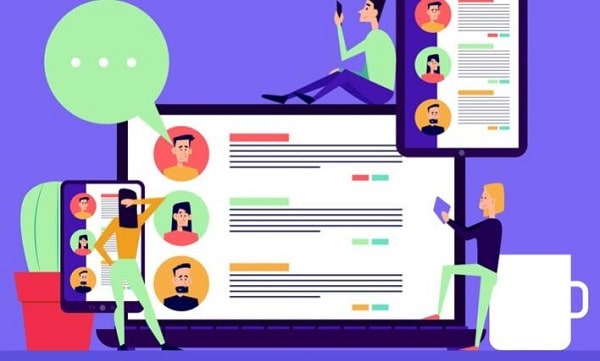
Pros
- Provides a collective and community-based connection
- Allows for peer-to-peer and self-service communication
- Enables rich and diverse content and perspectives
- Can build and leverage customer loyalty and advocacy
Cons
- It can be unreliable and inconsistent
- Can have conflicting and misleading information
- Can have spam and trolling issues
- Can have moderation and quality control challenges
Tips for using it better for customer support:
- Relevant and reputable online forum platform and category
- Clear and descriptive title and tag for each post
- Bullet points, headings, and paragraphs to organize the content
- Links and references to provide additional information
- Upvotes, downvotes, and comments to rate and reply to posts
- Online forum moderation and management tools to ensure quality and compliance
- Online forum analytics and feedback to measure and improve performance
Live Chat
Live chat is a fast and timely customer service channel, as it allows customers to chat with a human agent or a chatbot through a pop-up window on a website or a mobile app and get real-time and personalized assistance. Live chat is especially effective for urgent, simple, or sales-related issues or for customers who prefer synchronous and accessible communication.
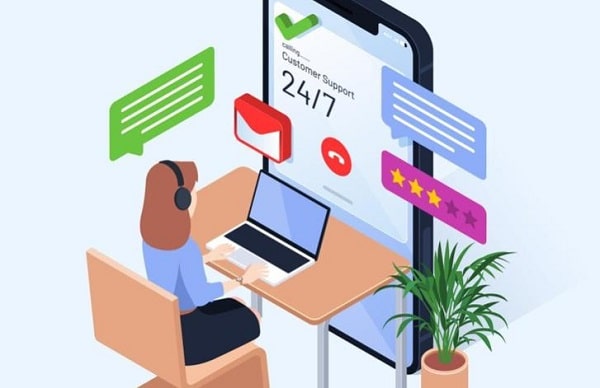
Pros
- It provides a fast and convenient connection
- Allows for real-time and interactive communication
- Enables multimedia and emoticons to convey emotions and personality
- Can increase customer satisfaction and conversion rates
Cons
- Costly and resource-intensive
- Have long wait times and technical issues
- Can have language and cultural barriers
- Can have limited and superficial communication
Tips for using it better for customer support:
- Prominent and attractive live chat widget on your website or app
- Friendly and personalized greeting and closing
- Multimedia and emoticons sparingly and appropriately
- Live chat templates and canned responses to save time and ensure consistency
- Live chat automation and AI to handle simple and repetitive tasks
- Live chat analytics and feedback to measure and improve performance
Video Chat
Video chat is a visual and immersive customer service channel, as it allows customers to see and hear a human agent or a video bot through a video call on a website, a mobile application or tool, or a third-party platform, such as Skype, Zoom, or FaceTime, and get real-time and personalized assistance. Video chat is especially effective for complex, technical, or emotional issues or for customers who prefer more visual and immersive communication.

Pros
- It provides a visual and immersive connection
- Allows for real-time and interactive communication
- Enables facial expressions and gestures to convey emotions and empathy
- Can handle complex and technical issues
Cons
- Costly and resource-intensive
- Low quality and technical issues
- Privacy and security issues
- Language and cultural barriers
Tips for using it better for customer support:
- High-quality and reliable video chat platform and device
- Professional and appropriate appearance and background
- Clear and polite speech and body language
- Screen sharing and annotation tools to provide additional information
- Video chat templates and scripts to save time and ensure consistency
- Video chat automation and AI to handle simple and repetitive tasks
- Video chat analytics and feedback to measure and improve performance
Knowledge Base
The knowledge base is a self-service and informative customer service channel, as it allows customers to access and browse a collection of articles, guides, FAQs, or tutorials on a website or a mobile app and get self-service and informative assistance. The knowledge base is especially effective for everyday, simple, or educational issues or customers who prefer more self-service and informative communication.
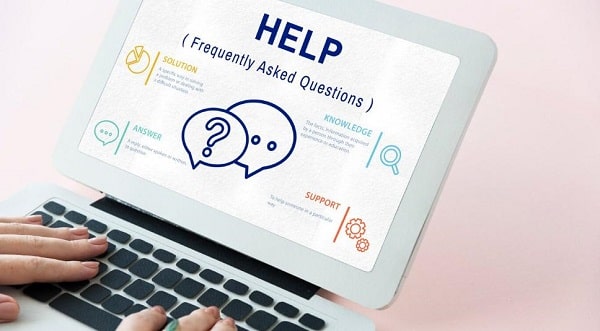
Pros
- Provides a self-service and informative connection
- Allows for self-service and informative communication
- Enables rich and comprehensive content and information
- Can reduce customer support costs and workload
Cons
- It can be difficult to develop and maintain
- Outdated and inaccurate information
- Can have navigation and search issues
- Low customer engagement and satisfaction
Tips for using it better for customer support:
- User-friendly and searchable knowledge base platform and design
- Clear and concise titles and categories
- Proper grammar, spelling, and punctuation
- Bullet points, headings, and paragraphs to organize the content
- Multimedia and links to provide additional information
- Knowledge base templates and best practices to create and update content
- Use knowledge base analytics and feedback to measure and improve performance
Web Forms
Web forms are a simple and direct customer service channel. They allow customers to fill out and submit a form with their contact details, issue descriptions, or feedback on a website or a mobile app and get simple and direct assistance. Web forms are especially effective for non-urgent, simple, or feedback-related issues or customers who prefer more straightforward communication.
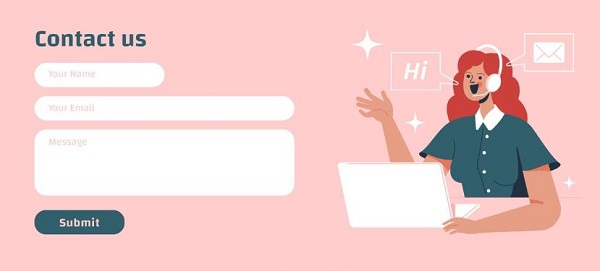
Pros
- It provides a simple and direct connection
- Allows for simple and direct communication
- Enables easy and quick data collection and submission
- Can improve customer support efficiency and quality
Cons
- Low completion and response rates
- Data validation and security issues
- Can have limited and impersonal communication
Tips for using it better for customer support:
- Simple and attractive web form design and layout
- Clear and concise labels and instructions
- Required and optional fields appropriately
- Drop-down menus, checkboxes, and radio buttons to provide options
- Web form validation and encryption to ensure data quality and security
- Web form analytics and feedback to measure and improve performance
Tips for Choosing the Right Customer Support Channel for Your Business
Choosing the right customer support channel for your business is challenging, as it depends on various factors, such as your business goals, customer needs, budget, resources, and competitors. However, here are some general tips that can help you make a better decision:
Audit the Currently Used Channels
The first step is to audit the customer support channels that you are currently using and evaluate their performance, effectiveness, and efficiency. You can use various metrics, such as customer satisfaction, resolution time, response rate, retention rate, conversion rate, cost per contact, and return on investment, to measure and compare the results of each channel.
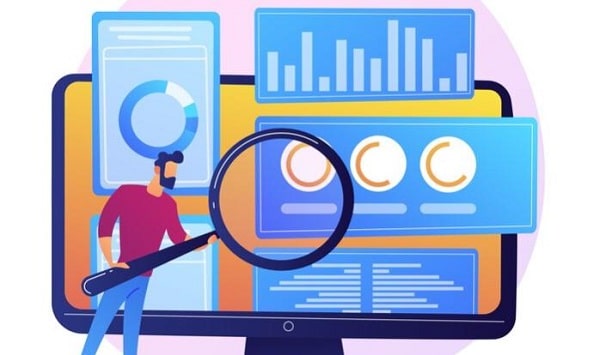
Understand Trends in the Industry
The second step is to understand the trends and innovations in the customer support industry and see how they affect your business and your customers. You can use various sources, such as industry reports, blogs, podcasts, webinars, and events, to keep up with the latest developments and best practices of customer support channels.
Ask the Customer for Their Opinion
The third step is to ask the customer for their opinion and see what they want and expect from your customer support channels. You can use various methods, such as customer feedback, surveys, votes, interviews, and focus groups, to collect and analyze the customer's voice and preference. You can also use customer segmentation, personas, and journey mapping to understand the customer's profile, behavior, and needs. Based on the data and analysis, you can identify the customer's pain points and desires and decide which channels to offer, prioritize, or customize.
Consider the Cost of Channels
The fourth step is to consider the cost of each customer support channel and see how it fits your budget and resources. You can use various tools, such as cost-benefit analysis, break-even analysis, and return on asset research, to calculate and compare the costs and benefits of each channel. You can also use various factors, such as the number of customers, the number of agents, the number of contacts, the complexity of issues, the quality of service, and the technology required, to estimate and optimize the costs and resources of each channel. Based on the calculations and estimations, you can identify the most affordable and profitable channels and decide which ones to invest, reduce, or outsource.

Best Practices: How to Optimize Customer Support Channels
Optimizing customer support channels is not a one-time task but a continuous process, as customer service channels constantly evolve and improve. However, here are some general best practices that can help you optimize your customer support channels:
Provide Multi-Channel Customer Service
Providing multi-channel customer service means offering more than one customer support channel to your customers and allowing them to select the channel that suits them best. This can improve customer pleasure, retention, and loyalty, as customers can communicate with you in their preferred way and get the assistance they need.
Collect and Listen to Customer Feedback
Collecting and listening to customer feedback means asking for and analyzing the customer's opinion and satisfaction with your customer support channels and using it to improve customer service. This can enhance customer satisfaction, retention, and commitment, as customers can feel valued and heard and see your changes and improvements.
Set SLA Policy and Goal
Setting SLA (Service Level Agreement) policy and goal means defining and communicating the standards and expectations of your customer support channels and measuring and monitoring your customer service performance. This can improve customer satisfaction, retention, and commitment, as customers can know what to expect and when to expect it and get the assistance they deserve.

Automate Repetitive and Tedious Tasks
Automating repetitive and tedious tasks means using technology, such as automation, AI, or chatbots, to handle simple and routine customer support tasks, such as greeting, routing, answering, or following up, and free up your human agents to focus on more complex and valuable customer support tasks. This can improve customer service efficiency, quality, and scalability, as customers can get faster and more accurate assistance, and agents can reduce their workload and stress.
Timely Analysis and Optimization
Timely analysis and optimization means using data, analytics, and testing to evaluate and improve your customer support channels and keep them up-to-date and relevant. This can improve customer service performance, effectiveness, and innovation, as you can identify and solve problems, discover and seize opportunities, and implement and validate changes and improvements.
Provide Technical Customer Support to Your Clients Using Remote Support Software
One of the most challenging and vital customer support tasks is providing technical customer support, as it involves helping customers with technical issues, such as installing, configuring, troubleshooting, or updating software or hardware. Technical customer support can be frustrating and time-consuming for both customers and agents, as it requires a lot of communication, explanation, and demonstration and may involve complex and technical terms and procedures.
However, there is a way to make technical customer support more accessible and more effective: remote support software. One of the best remote support software in the market is AirDroid Remote Support. This remote support software allows you to remotely access or control a user's mobile device for technical support.
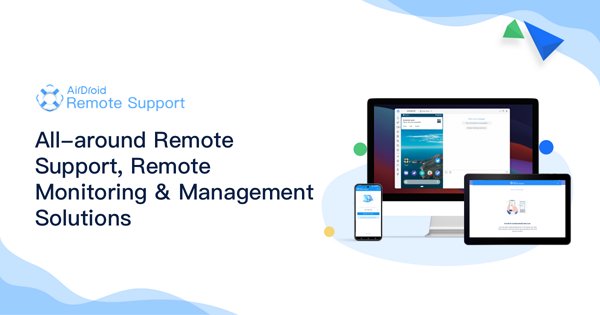
AirDroid Remote Support has the following features:
- Unattended Android Access: Under the unattended mode, you can connect and remote control a device without consent from the device end for maintenance purposes.
- AR Camera & 3D Marker: Allows you to see through the customers' device camera and guide your customers by placing 3D markers onto real-world objects.
- Tutorial Gesture: Swipe or tap on the shared screen, the tutorial gesture will appear on your customer's device. (Only available for Android devices)
- Live Chat via Voice Call and Voice/Text Message: Tackle and resolve complex issues by communicating directly with real-time voice chat and screen viewing. If the user is not available to take a call, you can communicate through voice messaging or text.
- Black Screen Mode under Remote Control: Black screen mode is a privacy-centric technology, which enables IT admins to hide the screen image of the remote device during the remote control session and a hint saying "This device is under maintenance" will be shown.
Final Thoughts
Customer support channels are how you communicate with your customers and provide them with assistance, information, or solutions to their problems or inquiries. Choosing and optimizing your business's proper customer support channels takes work, as it depends on various factors, such as your business goals, customer needs, budget, resources, and competitors.
However, you can use remote support software, such as AirDroid Remote Support, to make technical customer support easier and more effective, as it allows you to remotely access and control your customer's device and provide technical assistance, such as installing, configuring, troubleshooting, or updating software or hardware.






Leave a Reply.